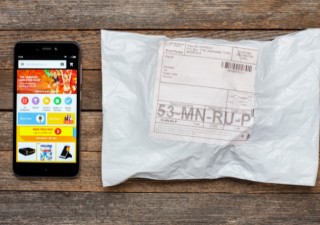The court judged that the first one was a trademark infringement while the second one was not.
“For the first abovementioned product, Baorui Company used the word "Xiaomi" and connected it with the word "portable battery", making it easy for the relevant public to believe that the portable battery sold under this title was produced by Xiaomi,” Du says. “The word "Xiaomi" here played the function of identifying the source of the product, which was determined as trademark use and constituted trademark infringement. For the second product, Baorui used together with the words "Xiaomi mobile", which was meant to explain to consumers that the portable battery is compatible with Xiaomi mobile phones. Since the alleged infringing product can indeed be applied to Xiaomi mobile phones, Apple mobile phones, etc., the word "Xiaomi" here had objectively a descriptive intention, which did not function as use of a trademark for the purpose of identifying the source of the product. Therefore, this did not constitute trademark Infringement.”
Du says that the title of a product sold online is an important factor for facilitating consumers’ search and attracting consumers to the seller’s store and is also a key way for the seller to show the source of the goods to consumers, like advertisement or transaction document in an offline physical store.
“Whether the use of a trademark in the product title constitutes trademark infringement depends on whether it actually plays the role of identifying the source of the product and whether it causes consumers to misrecognize the source of the product,” she says.
In Article 3 of “Criteria for Judging Trademark Infringement” published by the China Intellectual Property Administration (CNIPA), which just came into effect on June 17, 2020, “To judge whether (the use of a trademark) constitutes trademark infringement, it is generally necessary to judge whether the alleged infringement constitutes trademark use in the sense of the trademark law. The trademark use refers to using the trademark on commodities, commodity packages, containers, service venues and transaction documents or in advertising, exhibitions and other commercial activities in order to identify the source of goods or services."
“Correspondingly, to establish the defense of fair use, the trademark user needs to prove that the use does not cause the relevant public to be confused about the source of the goods,” says Du.
According to the court Judgement, “In its draft of the abovementioned “Criteria for Judging Trademark Infringement” (article 39), the CNIPA had provided detailed illustrations of fair use, such as (1) using a mark to indicate the generic name, shape or model, the quality, main raw materials, functions, use, weight, quantity and other features of the goods/services or to mark the production place of the goods/services, which does not cause misrecognition by the relevant public; (2) using a trademark in good faith and reasonably, to objectively indicate the source, use, service objects and other characteristics of the goods/services and their relation to the goods/services of others, which does not cause misrecognition by the relevant public. Although the content of this article was not maintained in the final version, it can still be used as a reference in practice.
Excel V. Dyquiangco








